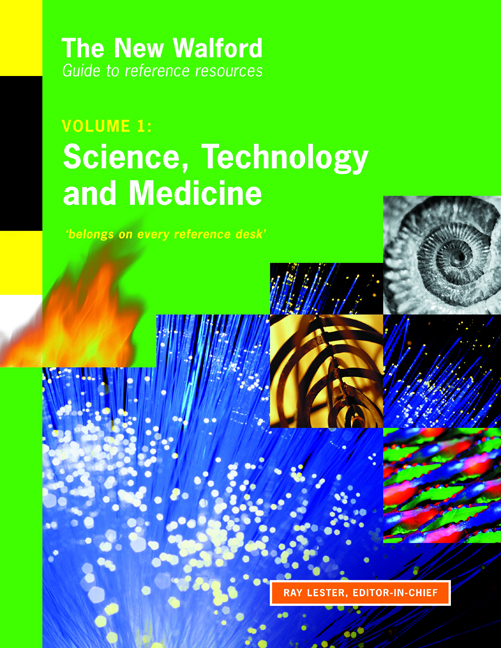Book contents
- Frontmatter
- Dedication
- Contents
- Preface
- Quick-start guide
- Editor and subject specialists
- 50 good websites to try first
- Introduction
- SCIENCE, TECHNOLOGY & MEDICINE: GENERIC RESOURCES
- SCIENCE
- Science
- Mathematics
- Physics & Astronomy
- Earth Sciences
- Chemistry
- Biological Sciences
- Agriculture, Forestry, Fisheries & Food
- MEDICINE
- TECHNOLOGY
- Tools for Information Professionals
- Indexes
- Topic Index
- Title/Author Index
Science
from SCIENCE
Published online by Cambridge University Press: 08 June 2018
- Frontmatter
- Dedication
- Contents
- Preface
- Quick-start guide
- Editor and subject specialists
- 50 good websites to try first
- Introduction
- SCIENCE, TECHNOLOGY & MEDICINE: GENERIC RESOURCES
- SCIENCE
- Science
- Mathematics
- Physics & Astronomy
- Earth Sciences
- Chemistry
- Biological Sciences
- Agriculture, Forestry, Fisheries & Food
- MEDICINE
- TECHNOLOGY
- Tools for Information Professionals
- Indexes
- Topic Index
- Title/Author Index
Summary
Introductions to the subject
The age of science: what scientists learned in the twentieth century
G. Piel Basic Books, 2001, 480pp. $40.00. ISBN 0465057551.
Engaging story by former Editor of SCIENTIFIC AMERICAN. Includes coverage of: fundamental forces of nature; subatomic world; cosmology; cell and molecular biology; earth history and evolution of life; human evolution. Useful end notes.
‘Highly recommended for all libraries. All levels.’ (Choice)
At the fringes of science: with a new epilogue M.W. Friedlander Westview, 1998, 202pp. $31.00. ISBN 0813390605.
‘What makes Friedlander's book especially useful is that he reviews conventional scientific method and shows how scientists examine the hard cases to determine what is science and what is pseudoscience. Emphasizing that there is no clear line of demarcation between science and nonscience, Friedlander leads the reader through case after entertaining case, covering the favorites of ‘tabloid science’ such as astrology and UFOs, scientific controversies such as cold fusion, and those maverick ideas that were at first rejected by science only to be embraced later. There are many good stories here, but there is also much learning and wisdom.
Students of science and interested lay readers will come away from this book with an increased understanding of what science is, how it works, and how the non-scientist should deal with science at its fringes.’
■ The skeptic: encyclopedia of pseudoscience M. Shermer, ed. ABC-CLIO, 2002, 903pp. $185.00. ISBN 1576076539. Editor and publisher of The Skeptic magazine provides comprehensive introduction to the most prominent pseudoscientific claims made in the name of ‘science’.
■ Society for Scientific Exploration www.scientificexploration.org. Professional forum for presentations, criticism, and debate concerning topics which are for various reasons ignored or studied inadequately within mainstream science. Quarterly journal. Useful set of Links (under Young Investigators Program.
Blackwell guide to the philosophy of science P. Machamer and M. Silberstein, ed. Blackwell Publishing, 2002, 360pp. £18.99. ISBN 0631221085.
Good wide-ranging overview. 15 chapters ranging from A brief historical introduction to the philosophy of science (and prognostications about its future) to Feminist philosophy of science.
Chronology of science: from Stonehenge to the Human Genome Project
L. Rosner, ed. ABC-CLIO, 2002, 566pp. $85.00. ISBN 1576079546. Chronologies divided into subject areas: astronomy, biology, chemistry, ecology, etc.
- Type
- Chapter
- Information
- The New Walford Guide to Reference ResourcesVolume 1: Science, Technology and Medicine, pp. 47 - 59Publisher: FacetPrint publication year: 2004

